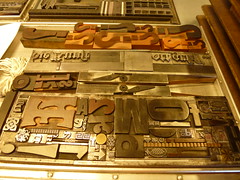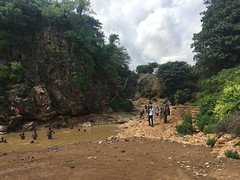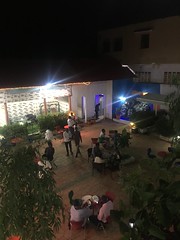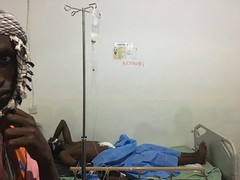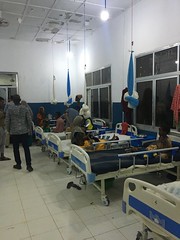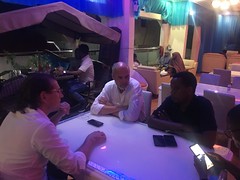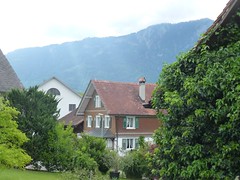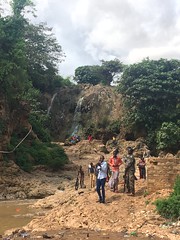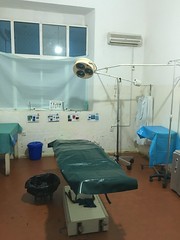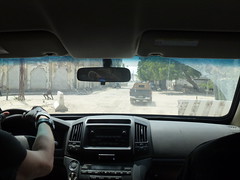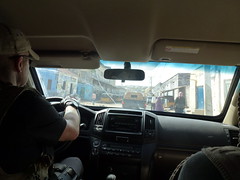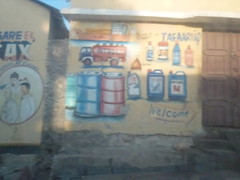 Somalia
Somalia
Somalia, officially the Federal Republic of Somalia (;), is a country in the Horn of Africa. The country is bordered by Ethiopia to the west, Djibouti to the northwest, the Gulf of Aden to the north, the Indian Ocean to the east, and Kenya to the southwest. Somalia has the longest coastline on Africa's mainland. Its terrain consists mainly of plateaus, plains, and highlands. Hot conditions prevail year-round, with periodic monsoon winds and irregular rainfall. Somalia has an estimated population of around million, of which over 2 million live in the capital and largest city Mogadishu, and has been described as Africa's most culturally homogeneous country. Around 85% of its residents are ethnic Somalis, who have historically inhabited the country's north. Ethnic minorities are largely concentrated in the south. The official languages of Somalia are Somali and Arabic. Most people in the country are Muslims, the majority of them Sunni.
In antiquity, Somalia was an important commercial center. It is among the most probable locations of the ancient Land of Punt. During the Middle Ages, several powerful Somali empires dominated the regional trade, including the Ajuran Sultanate, the Adal Sultanate, and the Sultanate of the Geledi.
In the late 19th century, Somali Sultanates like the Isaaq Sultanate and the Majeerteen Sultanate were colonized by both the Italian and British Empire. European colonists merged the tribal territories into two colonies, which were Italian Somaliland and the British Somaliland Protectorate. Meanwhile, in the interior, the Dervishes led by Mohammed Abdullah Hassan engaged in a two-decade confrontation against Abyssinia, Italian Somaliland, and British Somaliland and were finally defeated in the 1920 Somaliland Campaign. Italy acquired full control of the northeastern, central, and southern parts of the area after successfully waging the Campaign of the Sultanates against the ruling Majeerteen Sultanate and Sultanate of Hobyo. In 1960, the two territories united to form the independent Somali Republic under a civilian government.
Siad Barre of the Supreme Revolutionary Council seized power in 1969 and established the Somali Democratic Republic, brutally attempting to squash the Somaliland War of Independence in the north of the country. The SRC subsequently collapsed 22 years later, in 1991, with the onset of the Somali Civil War and Somaliland soon declared independence. Somaliland still controls the northwestern portion of Somalia representing just over 27% of its territory. Since this period most regions returned to customary and religious law. In the early 2000s, a number of interim federal administrations were created. The Transitional National Government (TNG) was established in 2000, followed by the formation of the Transitional Federal Government (TFG) in 2004, which reestablished the Somali Armed Forces.
In 2006, with a US backed Ethiopian intervention, the TFG assumed control of most of the nation's southern conflict zones from the newly formed Islamic Courts Union (ICU). The ICU subsequently splintered into more radical groups, including jihadists al-Shabaab, which battled the TFG and its AMISOM allies for control of the region. By mid-2012, the insurgents had lost most of the territory they had seized, and a search for more permanent democratic institutions began. Despite this, insurgents still control much of central and southern Somalia, and wield influence in government-controlled areas, with the town of Jilib acting as the insurgents' de facto capital. A new provisional constitution was passed in August 2012, reforming Somalia as a federation. The same month, the Federal Government of Somalia was formed and a period of reconstruction began in Mogadishu, despite al-Shabaab frequently carrying out attacks there.
Somalia's GDP per capita is one of the world's lowest, and it belongs to the least developed country group. In 2019, Somalia had the lowest HDI in the world, and in the same year, 69% of Somalia's population was living below the poverty line. As of 2020, Somalia is placed the second highest in the Fragile States Index. It has maintained an informal economy mainly based on livestock, remittances from Somalis working abroad, and telecommunications. It is a member of the United Nations, the Arab League, African Union, Non-Aligned Movement, and the Organisation of Islamic Cooperation.
History
Prehistory
Somalia was likely one of the first lands to be settled by early humans due to its location. Hunter-gatherers who would later migrate out of Africa likely settled here before their migrations. During the Stone Age, the Doian and Hargeisan cultures flourished here. The oldest evidence of burial customs in the Horn of Africa comes from cemeteries in Somalia dating back to the 4th millennium BCE. The stone implements from the Jalelo site in the north were also characterized in 1909 as important artifacts demonstrating the archaeological universality during the Paleolithic between the East and the West.
According to linguists, the first Afroasiatic-speaking populations arrived in the region during the ensuing Neolithic period from the family's proposed urheimat ("original homeland") in the Nile Valley, or the Near East.
The Laas Geel complex on the outskirts of Hargeisa in northwestern Somalia dates back approximately 5,000 years, and has rock art depicting both wild animals and decorated cows. Other cave paintings are found in the northern Dhambalin region, which feature one of the earliest known depictions of a hunter on horseback. The rock art is dated to 1,000 to 3,000 BCE. Additionally, between the towns of Las Khorey and El Ayo in northern Somalia lies Karinhegane, the site of numerous cave paintings of both real and mythical animals. Each painting has an inscription below it, which collectively have been estimated to be around 2,500 years old.
Antiquity and classical era
Ancient pyramidical structures, mausoleums, ruined cities and stone walls, such as the Wargaade Wall, are evidence of an old civilization that once thrived in the Somali peninsula. This civilization enjoyed a trading relationship with ancient Egypt and Mycenaean Greece since the second millennium BCE, supporting the hypothesis that Somalia or adjacent regions were the location of the ancient Land of Punt. The Puntites native to the region, traded myrrh, spices, gold, ebony, short-horned cattle, ivory and frankincense with the Egyptians, Phoenicians, Babylonians, Indians, Chinese and Romans through their commercial ports. An Egyptian expedition sent to Punt by the 18th dynasty Queen Hatshepsut is recorded on the temple reliefs at Deir el-Bahari, during the reign of the Puntite King Parahu and Queen Ati. In 2015, isotopic analysis of ancient baboon mummies from Punt that had been brought to Egypt as gifts indicated that the specimens likely originated from an area encompassing eastern Somalia and the Eritrea-Ethiopia corridor.
In the classical era, the Macrobians, who may have been ancestral to Somalis, established a powerful tribal kingdom that ruled large parts of modern Somalia. They were reputed for their longevity and wealth, and were said to be the "tallest and handsomest of all men". The Macrobians were warrior herders and seafarers. According to Herodotus' account, the Persian Emperor Cambyses II, upon his conquest of Egypt in 525 BC, sent ambassadors to Macrobia, bringing luxury gifts for the Macrobian king to entice his submission. The Macrobian ruler, who was elected based on his stature and beauty, replied instead with a challenge for his Persian counterpart in the form of an unstrung bow: if the Persians could manage to draw it, they would have the right to invade his country; but until then, they should thank the gods that the Macrobians never decided to invade their empire. The Macrobians were a regional power reputed for their advanced architecture and gold wealth, which was so plentiful that they shackled their prisoners in golden chains. The camel is believed to have been domesticated in the Horn region sometime between the 2nd and 3rd millennium BCE. From there, it spread to Egypt and the Maghreb.
During the classical period, the Barbara city-states also known as sesea of Mosylon, Opone, Mundus, Isis, Malao, Avalites, Essina, Nikon and Sarapion developed a lucrative trade network, connecting with merchants from Ptolemaic Egypt, Ancient Greece, Phoenicia, Parthian Persia, Saba, the Nabataean Kingdom, and the Roman Empire. They used the ancient Somali maritime vessel known as the beden to transport their cargo.
After the Roman conquest of the Nabataean Empire and the Roman naval presence at Aden to curb piracy, Arab and Somali merchants agreed with the Romans to bar Indian ships from trading in the free port cities of the Arabian peninsula to protect the interests of Somali and Arab merchants in the lucrative commerce between the Red and Mediterranean Seas. However, Indian merchants continued to trade in the port cities of the Somali peninsula, which was free from Roman interference. For centuries, Indian merchants brought large quantities of cinnamon to Somalia and Arabia from Ceylon and the Spice Islands. The source of the cinnamon and other spices is said to have been the best-kept secret of Arab and Somali merchants in their trade with the Roman and Greek world; the Romans and Greeks believed the source to have been the Somali peninsula. The collusive agreement among Somali and Arab traders inflated the price of Indian and Chinese cinnamon in North Africa, the Near East, and Europe, and made the cinnamon trade a very profitable revenue generator, especially for the Somali merchants through whose hands large quantities were shipped across sea and land routes.
Birth of Islam and the Middle Ages
Islam was introduced to the area early on by the first Muslims of Mecca fleeing prosecution during the first Hejira with Masjid al-Qiblatayn in Zeila being built before the Qiblah towards Mecca. It is one of t…
Looking for places related to Somalia?
Those are other destinations to find places related to Somalia:


